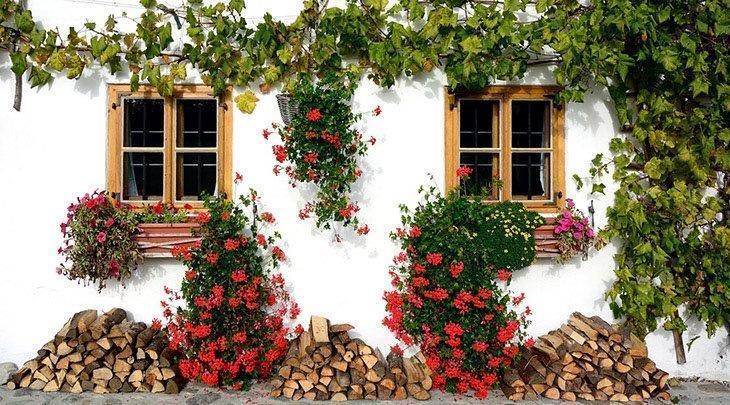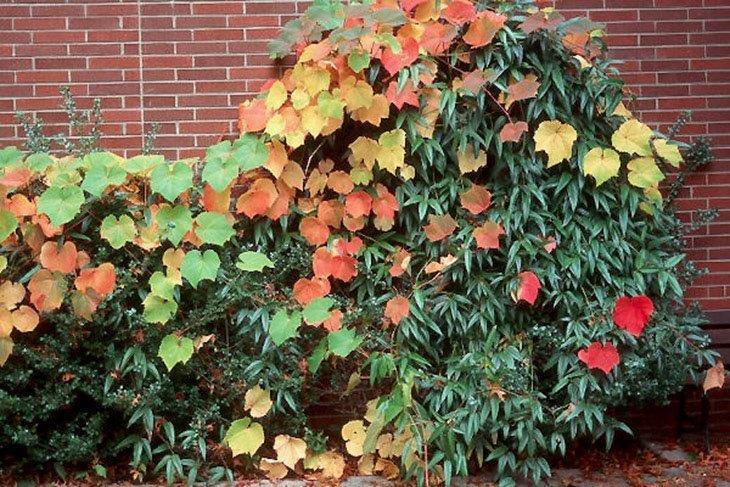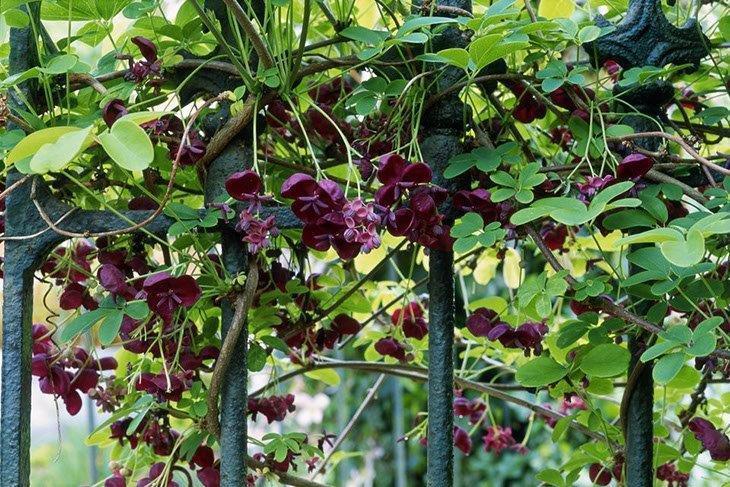Whether for privacy, protection, or curb appeal, the fence is the face your garden puts on for everyone to see. And since time passes no one, those tell-tale signs will inevitably show up to reveal how long it's been since you last painted it or did some other maintenance.

Best Climbing Plants for Trellises
If you don't want to splurge on a new fence installation, new patio furniture or a hefty to boost the way your exterior feels but want to revamp the first impression of your property, you can do so with a trellis and a stunning plant to naturally beautify your property. If you're considering such a project, here are five of the best climbing plants for your fence:
More...
Crimson Glory Vine

Crimson Glory Vine
One of the most vigorous climbers, the crimson glory vine was introduced in the UK in the 19th century. This ornamental vine, originally from Japan, is a quick grower and requires plenty of space to spread its large rounded leaves, which can reach 30 cm. In the summer, the vine cools off spaces with a dense cover of heavily veined dark green leaves, thick in texture, and a lot less lobed than those of a common grape vine. And come autumn, it glams up in a fiery palette. The dimpled leaves make a stunning display of rich reds, oranges, purple-crimson, and yellow.
You can grow this vine in full sun or partial shade in fairly deep and fertile neutral or alkaline soil. It can climb up a mature deciduous tree or cover the top and run down the sides of a tall, sound wall, pergola or sturdy trellis.
A real beauty queen, this glamorous vine has been recognised by the RHS with the Award of Garden Merit. And as a true diva, it requires a lot of personal space, so ensure it has enough room to do without cutting.
The best time to plant seeds is from September to May and the best time to take cuttings - between January and April. It can be propagated by layering in early autumn.
A young plant needs to be well watered until it establishes a root system. After its first year, this plant needs absolutely no attention. If you think it's getting too big, you can cut it back in early winter.
Clematis

Clematis
10 or 15 years ago, you probably had hard time finding a single clematis in the nursery, but today as they're becoming more and more popular, these flowering vines come in varieties for any season and every colour scheme. And the installation options for these climbers are also plenty – they can climb over a pergola or trellis, through a tree or up a free-standing gazebo.
You can easily grow a clematis vine for your fence trellis and keep them growing strong by meeting their three main requirements: they need their stems and leaves exposed to sunlight; their roots -- cool and moist but not wet, and they need adequate support for climbing.
Plant the vine in a place where it will get at least six hours a day of sunlight and keep the roots cool by placing mulch or organic compost or by planting low shrubs at the base of the vine for shade. Clematis vines need a steady support to display their grandeur and the beauty of their big bold flowers.
Sweet Pea

Sweet Pea
While the clematis may seem like a bit of a newcomer on the gardening scene, the sweet pea is an heirloom plant for a trellis with its exquisite fragrance and delicate flowers. Even though growing and displaying bouquets of sweet peas is a tradition, this vining plant has a reputation as hard to grow. With the right timing for sowing and proper care, however, they are relatively hassle-free and a pleasure to grow. And with their enchanting fragrance and gorgeous blooms, they are well worth every effort.
Sweet pea seeds are best sown in autumn, so that they have enough time to germinate and develop root systems. In areas with cold winters, sow the seeds in containers inside and transplant them outdoors when the weather allows. Generally, sweet pea seeds germinate in 10 to 28 days, depending on weather and soil temperature.
Sweet peas need rich and well-drained soil and full sun or partial shade, ideally with protection from intense afternoon sun. They also need a lot of fertilising and regular dead-heading.
Plant sweet peas at an elbow distance to allow air circulation. When climbing trellis, peas use tendrils to climb. They can grasp anything that's a quarter-inch or less. The best support is string, twine, or netting with a grid that’s at least 5 cm x 5 cm.
Trumpet Vine Plant

Trumpet Vine Plant
This perennial vigorous vine is quite easy to grow. Although its rapid growth and self-clinging ability have earned it a reputation of being invasive, with the proper maintenance and care, it can be kept under control.
The trumpet vine can reach up to 10 m. It has pinnate leaves and produces clusters of yellow, bright-orange or red trumpet-shaped blooms in late summer and autumn. The tubular flowers are about 8 cm long and attract hummingbirds.
The trumpet creeper will thrive in both sun and partial shade and although it prefers soil with good drainage, it can adapt to nearly any soil. The vine grows rapidly and needs a support structure such as trellis, fence, or an arbour. Unlike the crimson glory vine, the trumpet vine is not recommended to climb trees as this can lead to strangulation.
Once established, this vigorous climber requires little care, says Desiree Thomson, a horticulturist from Gardening Services London. You don't have to fertilise and you will have to water it only as needed. Apart from watering, the only maintenance you’ll need to perform is regular pruning to keep it under control. Pruning has to be carried out early spring or autumn.
Five-leaf Akebia

Five-leaf Akebia
One of the best vines you can add to your garden is the five-leaf akebia, also known as chocolate vine. This vine fills quickly any structure for a lush look and softens unsightly fences and walls. The vine blooms with creamy-white or purplish-brown flowers with delicious vanilla scent in spring and grows rapidly all summer long with bright-green foliage.
This loose-scrambling climber reaches about 4.5 – 6 m quickly. In milder climates, it remains evergreen and looks great year-round. This vine needs a sunny to partially sunny spot and well-drained soil.
Growing five-leaf akebia is relatively carefree – one of the easiest ways to maintain it is to simply give the plant a trellis or pole to wrap around. The plant is really manageable, but it does need some simple maintenance to prevent it from becoming invasive. Clip unwanted tendrils regularly and train the desired ones. To help keep it further under control, pick off the seed pods that form in autumn.
Discover More:

